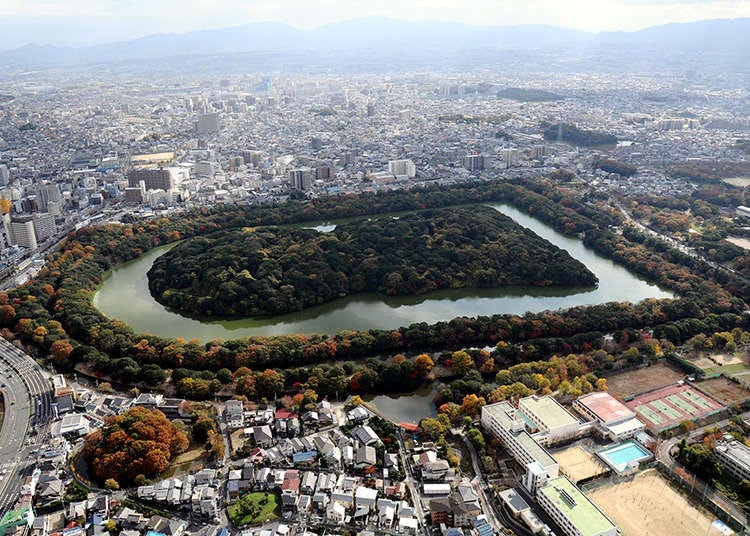
Kofun (ancient burial mounds) are tombs that those in power such as emperors, empresses, baronial families and chiefs of local villages used to build from the 3rd century to the 7th century. Many ancient burial mounds are left in all over Japan particularly in Kansai region.
The History
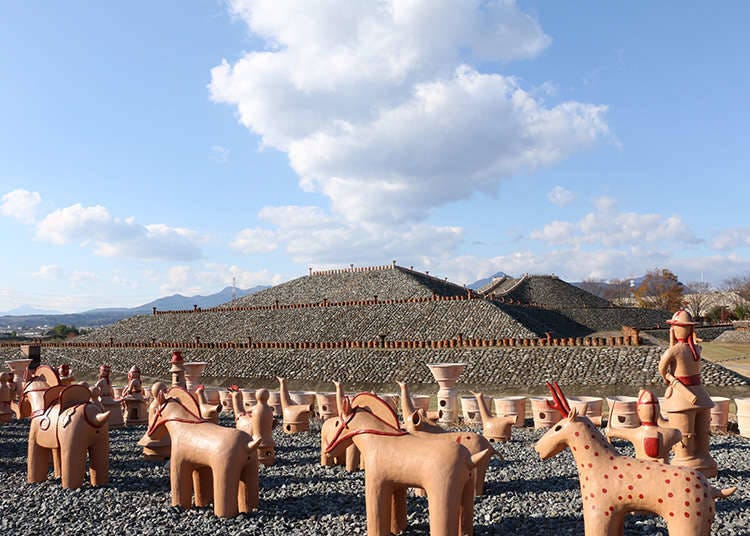
Many kofun were built in Japan from the second half of the 3rd century to the 4th century. Back then, Japan was not unified and people in power called "gozoku" (powerful family or clan) from various areas were competing one another in a power struggle. Each gozoku built a large ancient tomb to show off their authority. Later on the burying method changed from burial to cremation due to the rise of Buddism along with the change of regime, which caused the cessation of kofun in the end of 7th century.. The period from the 3rd to the 6th century when many kofun were built is named the "Kofun period" (250 AD- 538 AD), after these burial mounds.
Burial Goods
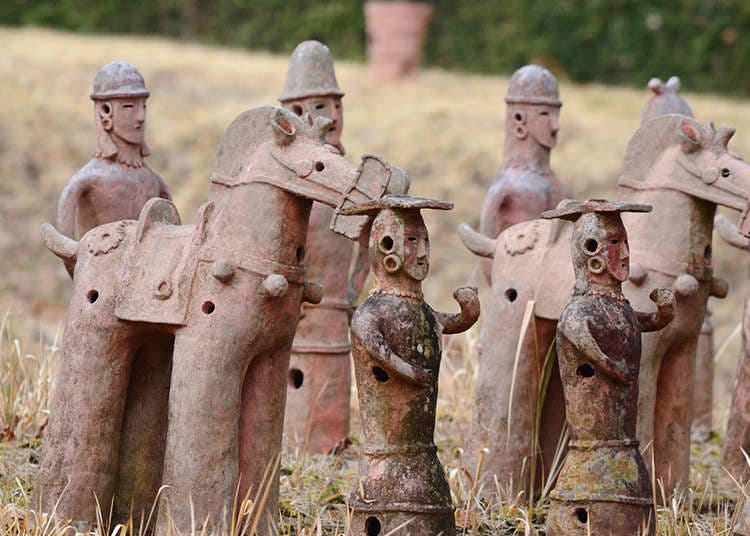
Many ornaments were buried inside kofun. Typical ornaments were copper mirrors, arms like swords and armour and earthenware ornaments. Haniwa (terracotta clay figures) with shapes of humans and horses and cylindrical shaped earthenware were also buried together. The more grave goods there were, the more powerful the person was considered to be.
The Sizes
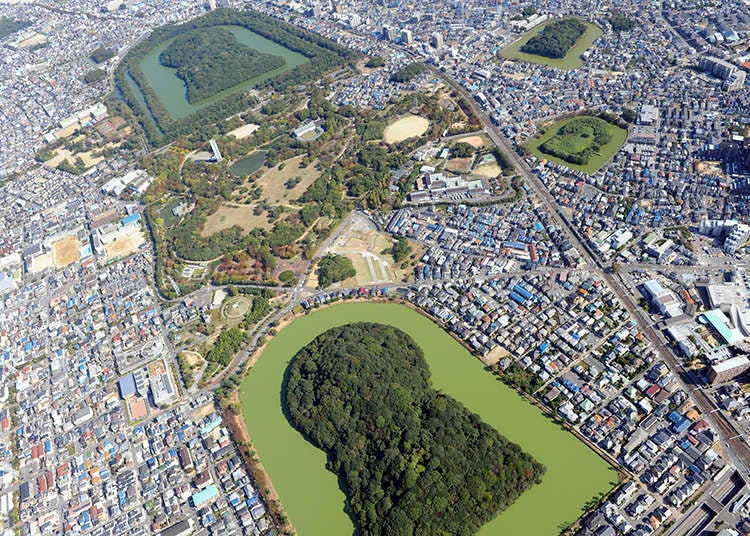
The biggest kofun in Japan is Daisenryo Kofun (Emperor Nintoku's kofun) located in Sakai city in Osaka, the area is 470 thousand square meters including the moat. The second and third biggest kofun are also located in Osaka, which shows that many powerful families used to live in the Kansai region.
The Shapes

A famous shape among kofun is circular-shaped in the rear with a rectangular front. It looks like a keyhole. Daisenryo Kofun (Emperor Nintoku's tomb), the biggest ancient tomb, also has this shape. Other shapes are circular-shapes, rectangular shapes, octagonal shapes and carriage shapes.
Necessary Labor to Build Kofun
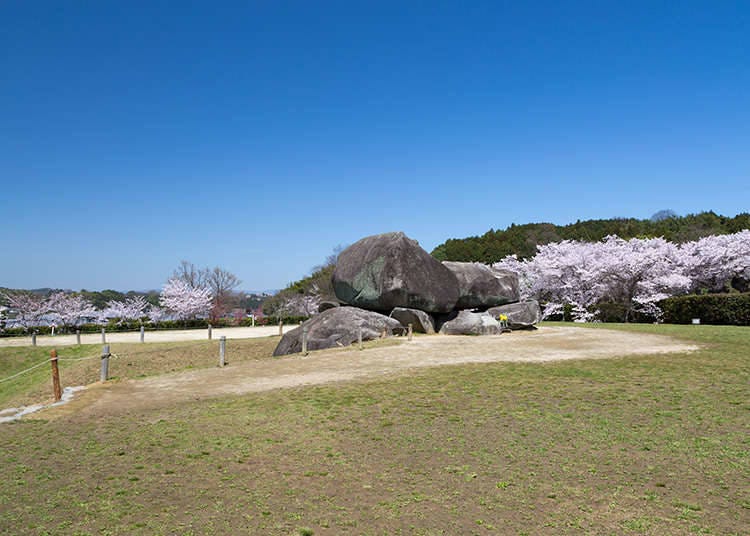
In order to build the Daisenryo kofun, the biggest tomb, it is said that 2,000 people had to work for 8 hours every day and it required 16 years to finish building. In old days wooden-made and iron-made suki (Japanese spades) were used during the work. And the total cost is said to be the equivalent of 80 billion Japanese yen (around 700 million US dollar) today .
Number of kofun
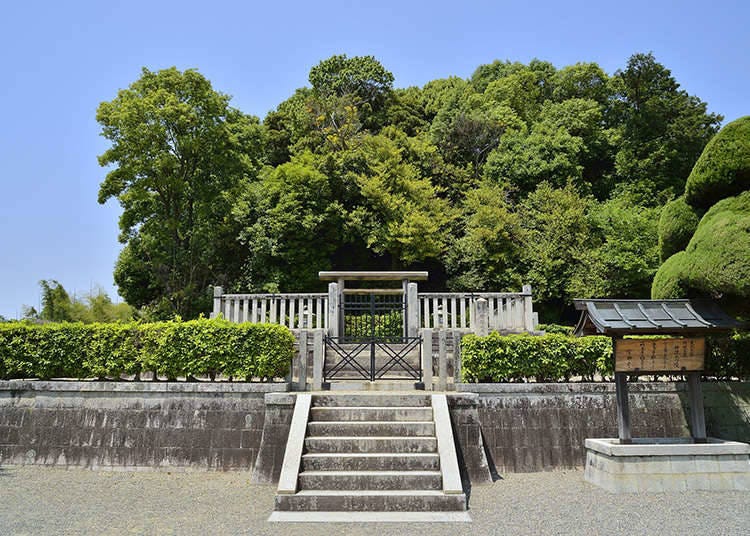
The highest number of kofun is in Hyogo, where there are 16,577 tombs. Next is Chiba, Tottori, Fukuoka and Kyoto. All over Japan, there are still 161,560 kofun left.
*Prices and options mentioned are subject to change.
*Unless stated otherwise, all prices include tax.
Recommended places for you
-

Kanzenkoshitsuyakinikutabehodai Gyugyu Paradise Sannomiya
Yakiniku
Kobe, Sannomiya, Kitano
-

Jukuseiniku-to Namamottsuarera Nikubaru Italian Nikutaria Sannomiya
Izakaya
Kobe, Sannomiya, Kitano
-

Kambei Sannomiyahonten
Yakiniku
Kobe, Sannomiya, Kitano
-
Appealing

Rukku and Uohei
Izakaya
Sapporo / Chitose
-

ISHIDAYA Hanare
Yakiniku
Kobe, Sannomiya, Kitano
-
Goods

Yoshida Gennojo-Roho Kyoto Buddhist Altars
Gift Shops
Nijo Castle, Kyoto Imperial Palace
-

Via Inn Prime Osaka Kyobashi Mizukinoyu: A Convenient Hotel Near Osaka Castle with Open-Air Baths and Nearby Sightseeing
by: Yotsuka Hizuki
-

A Don Quijote Like No Other: Step Inside the All-New Tourist-Friendly Store at Shinjuku Tonanguchi Bekkan (Open June 13)
by: Chehui Peh
-

Discover Japan Duty Free GINZA: A Unique Shopping Experience in the Heart of Tokyo
by: Chehui Peh
-

Hotel Green Plaza Hakone (Review): Soak in the View of Mt. Fuji from an Open-Air Hot Spring
by: Mayumi Kawai
-
Ad

Tokyo Comedy Bar: Where Jokes and Craft Beer Flow Freely
-
Ad

Lapoppo Farm, one of Japan's leading makers of sweet potato treats! An in-depth guide to the secrets behind its popularity, including best-selling products and facilities!
-

Tokyo Roppongi: 5 Most Amazing Spots at Roppongi Hills and How to Make the Best of Them!
-

Michelin Star Restaurants & More: 3 Best Okonomiyaki Shops in Dotonbori Osaka
-

Ikebukuro Station Area Guide: Top 15 Spots When You Escape the Station's Maze!
-

Leaving no Stone Unturned: Discovering the Unseen at Tokyo’s Zoshigaya Cemetery
by: Pamela Drobig
-

These 16 Things to Do in Hakodate Japan Will Make You Fall in Love With the Northern Wonderland
-

3 Famous Ramen Shops in Yamagata - Japan's "Ramen Prefecture"!
- #best sushi japan
- #what to do in odaiba
- #what to bring to japan
- #new years in tokyo
- #best ramen japan
- #what to buy in ameyoko
- #japanese nail trends
- #things to do japan
- #onsen tattoo friendly tokyo
- #daiso
- #best coffee japan
- #best japanese soft drinks
- #best yakiniku japan
- #japanese fashion culture
- #japanese convenience store snacks













